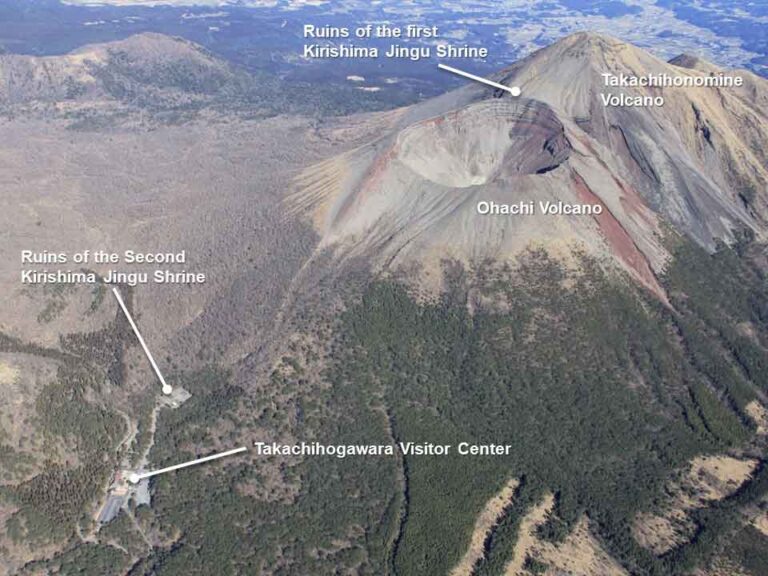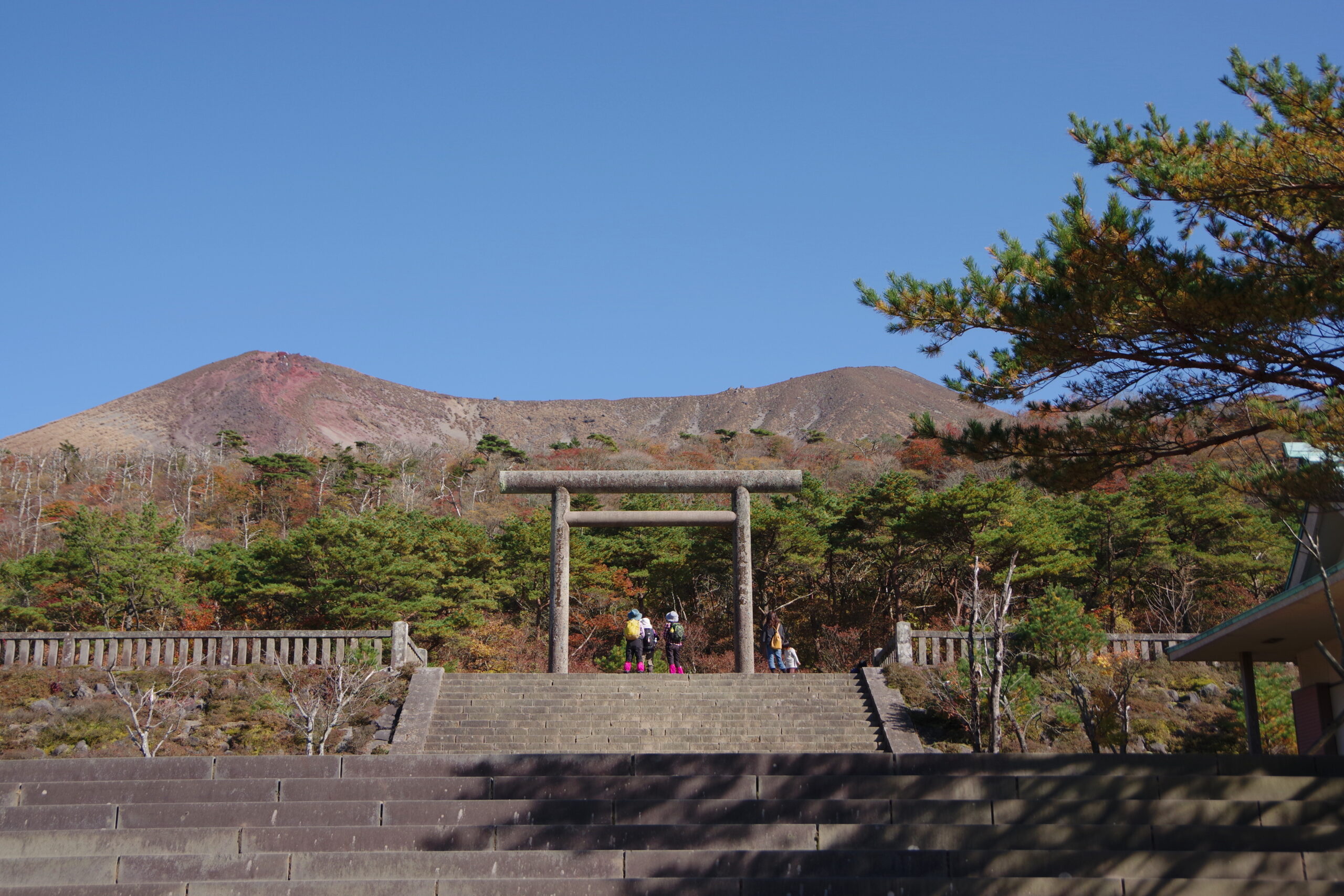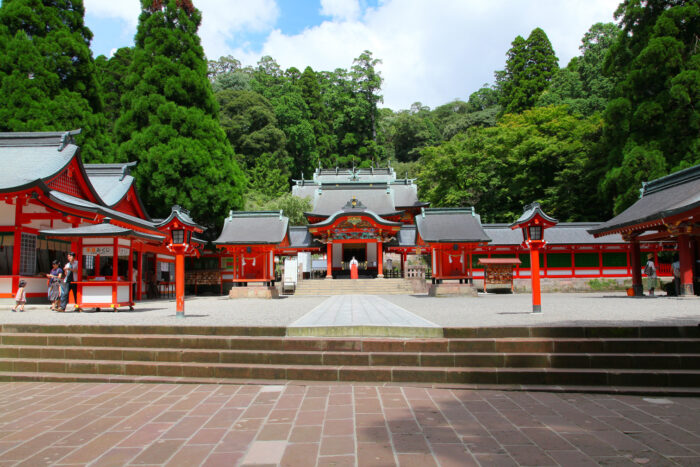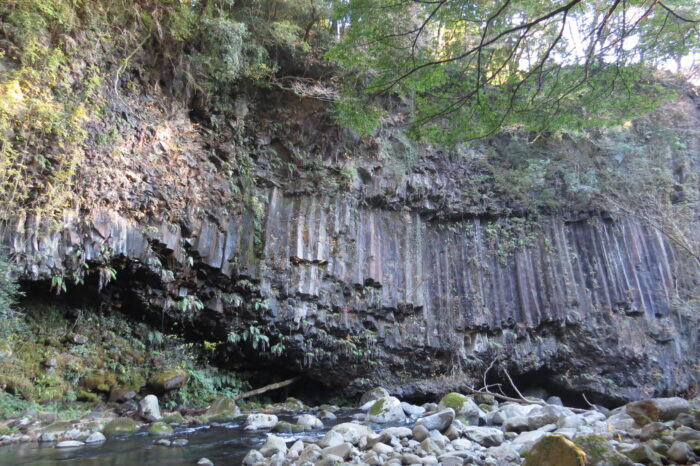Kirishima Geopark is an area centered on the Kirishima Mountains, which is a group of more than 20 active volcanoes lying on top of each other. Other than the Kirishima Mountains, there are also a variety of volcanic landforms to visit in the surrounding area, including multiple calderas and Shirasu plateaus.
Volcanic activities not only create landforms, but also various natural environments and ecosystems, and blessings such as hot springs and spring water.
Volcanoes have also influenced lifestyle and culture at the foot of the mountains. The influence of volcanoes can be seen in the stone culture and belief in volcanoes (shrines, etc.) that remain in various areas, as well as in the food culture of the region, including local specialties such as imo-jochu (sweet potato shochu) and tea.
A place where you can think about “what is a volcano” and experience the way of life and the culture of people who have lived at the foot of an active volcano, that is what Kirishima Geopark.

Caldera
A landform formed during an eruption, when a large amount of magma that had accumulated underground erupted all at once, causing the ground to plunge and sink into the hollowed-out beneath. A caldera eruption is a massive eruption of a magnitude such that once it occurs, it can destroy the surrounding civilization, and such eruptions occur once every few tens of thousands of years in Southern Kyushu.
Shirasu
The accumulation of large pyroclastic flows (a phenomenon in which volcanic ash, pumice, hot gasses, etc. flow in unison) that erupted during caldera eruptions. Shirasu is a folk name in Southern Kyushu and generally refers to the Ito Pyroclastic Flow deposit that erupted from the Aira Caldera about 30,000 years ago. A Shirasu plateau is the landform formed after a pyroclastic flow deposit that filled plains and valleys has been eroded.
The History of Volcanoes and People Told by Kirishima Jingu Shrine

Ohachi Volcano and Takachiho Volcano
In the vicinity of Kirishima Mountains, which have repeatedly erupted even during recorded history, are many shrines that pray for the extinguishing of fire and national peace. Kirishima Jingu Shrine, a representative example of such shrines, has a history of being repeatedly burned down and relocated due to the eruption of the Kirishima Mountains.
The Kirishima Jingu Shrine was not rebuilt in the same location. The people of the past may have done so because of the risk of another eruption in the same place. These histories tell us how people living at the foot of an active volcano have dealt with it.
-scaled.jpg)
Ruins of the First Kirishima Jingu Shrine
The place where Kirishima Jingu Shrine is believed to have been first built. It is located on a place called “Seto-o” between Takachiho Volcano and Ohachi Volcano.

Ruins of the Second Kirishima Jingu Shrine
Where Kirishima Jingu Shrine once stood. The shrine was destroyed by fire in the 1235 eruption of Ohachi, and now only ruins remain. The area around the site is called Takachiho-gawara, and is one of the mountain climbing bases of the Kirishima Mountains, with a visitor center established.

Kirishima Jingu Shrine
It is believed that the shrine was first built around the 6th century between Takachiho Volcano and Ohachi Volcano. Later, the shrine was repeatedly relocated due to eruptions of Ohachi Volcano, and the present location was built in the 15th century. The shrine buildings were constructed by building a stone wall on the lava slope created by the eruption of Ohachi Volcano.

Kirishima Shinsuikyo Gorge
Lava rocks from the 788 eruption of Ohachi Volcano, which flowed into the gorge along the Kirishima River, are exposed, and beautiful columnar joints can be observed. The present-day Kirishima Jingu Shrine buildings stand on top of these lava rocks.